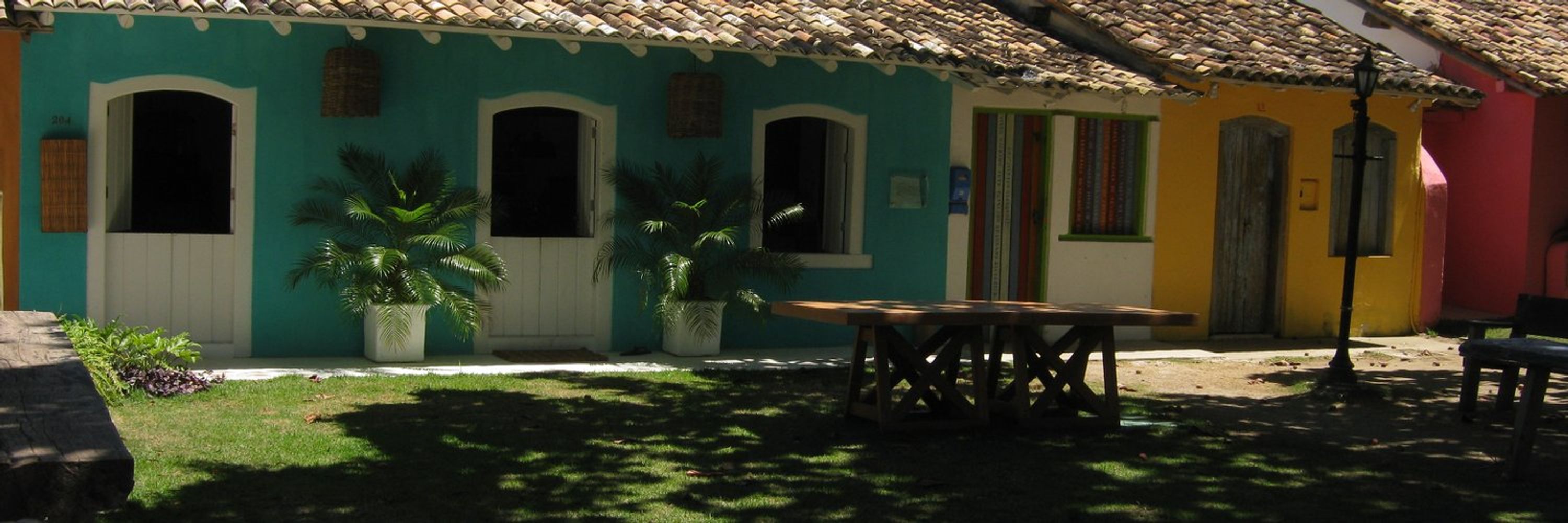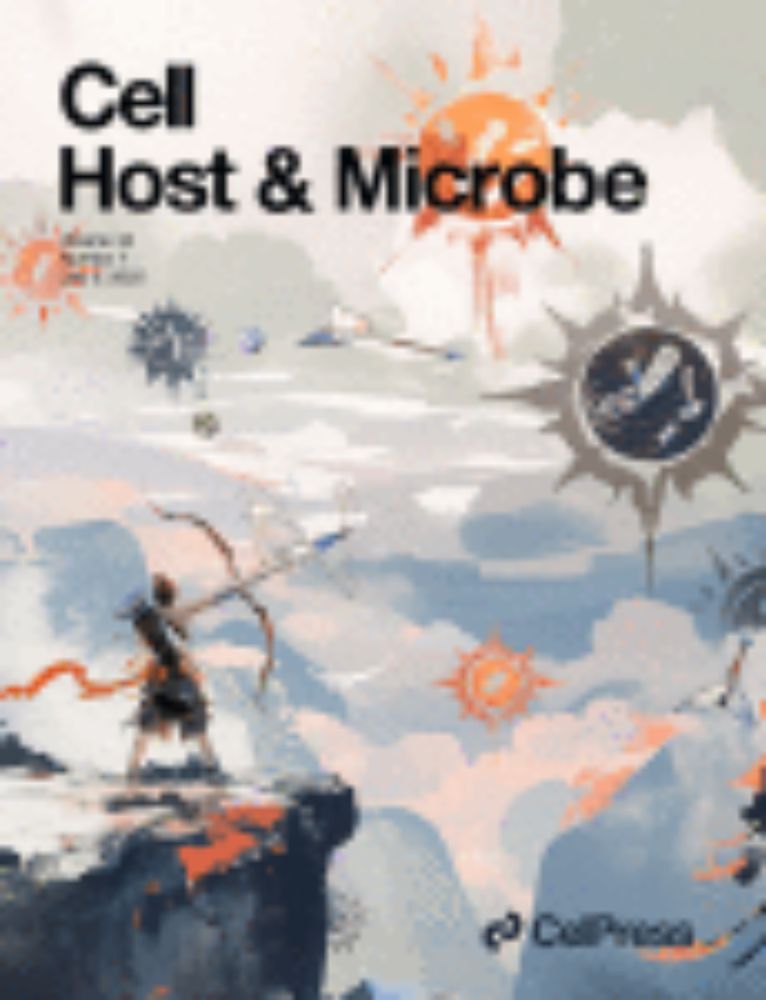
Lucas Santana Souza
@lucasgenoma.bsky.social
Using mathematical models and individual-based simulations to study the social evolution of microbes, viruses, and endosymbiosis.
Our Guest: István Zachar.
Title: Farming the mitochondrial ancestor as a model of endosymbiotic establishment by natural selection.
When: 🌟THIS Thursday, 13 of November, at 3 PM CEST (Stockholm time zone).
Zoom link: umu.zoom.us/j/61448056807
#Endosymbiosis
Title: Farming the mitochondrial ancestor as a model of endosymbiotic establishment by natural selection.
When: 🌟THIS Thursday, 13 of November, at 3 PM CEST (Stockholm time zone).
Zoom link: umu.zoom.us/j/61448056807
#Endosymbiosis

November 10, 2025 at 3:52 PM
Our Guest: István Zachar.
Title: Farming the mitochondrial ancestor as a model of endosymbiotic establishment by natural selection.
When: 🌟THIS Thursday, 13 of November, at 3 PM CEST (Stockholm time zone).
Zoom link: umu.zoom.us/j/61448056807
#Endosymbiosis
Title: Farming the mitochondrial ancestor as a model of endosymbiotic establishment by natural selection.
When: 🌟THIS Thursday, 13 of November, at 3 PM CEST (Stockholm time zone).
Zoom link: umu.zoom.us/j/61448056807
#Endosymbiosis
Our Guest: István Zachar.
Title: Farming the mitochondrial ancestor as a model of endosymbiotic establishment by natural selection.
When: 🌟NEXT Thursday, 13 of November, at 3 PM CEST (Stockholm time zone).
Zoom link: umu.zoom.us/j/61448056807 #Endosymbiosis
Title: Farming the mitochondrial ancestor as a model of endosymbiotic establishment by natural selection.
When: 🌟NEXT Thursday, 13 of November, at 3 PM CEST (Stockholm time zone).
Zoom link: umu.zoom.us/j/61448056807 #Endosymbiosis

November 3, 2025 at 4:42 PM
Our Guest: István Zachar.
Title: Farming the mitochondrial ancestor as a model of endosymbiotic establishment by natural selection.
When: 🌟NEXT Thursday, 13 of November, at 3 PM CEST (Stockholm time zone).
Zoom link: umu.zoom.us/j/61448056807 #Endosymbiosis
Title: Farming the mitochondrial ancestor as a model of endosymbiotic establishment by natural selection.
When: 🌟NEXT Thursday, 13 of November, at 3 PM CEST (Stockholm time zone).
Zoom link: umu.zoom.us/j/61448056807 #Endosymbiosis
Paradoxical role of new endosymbiotic associations: they facilitate the emergence of new partnerships, but inhibit deeper integration between hosts and guests (by favoring uncoordinated reproduction over synchronized ones). That is, easy come, easy go. #Endosymbiosis doi.org/10.1101/2025...

October 29, 2025 at 3:41 PM
Paradoxical role of new endosymbiotic associations: they facilitate the emergence of new partnerships, but inhibit deeper integration between hosts and guests (by favoring uncoordinated reproduction over synchronized ones). That is, easy come, easy go. #Endosymbiosis doi.org/10.1101/2025...
Currency exchange in endosymbiosis: early on, hosts’ investments generate a fortune in guest growth; near full reproductive synchronization, that same investment buys much less. That is, cheap early gains, expensive late ones.
#Endosymbiosis #tradeoffs
doi.org/10.1101/2025...
#Endosymbiosis #tradeoffs
doi.org/10.1101/2025...

October 29, 2025 at 3:32 PM
Currency exchange in endosymbiosis: early on, hosts’ investments generate a fortune in guest growth; near full reproductive synchronization, that same investment buys much less. That is, cheap early gains, expensive late ones.
#Endosymbiosis #tradeoffs
doi.org/10.1101/2025...
#Endosymbiosis #tradeoffs
doi.org/10.1101/2025...
Reposted by Lucas Santana Souza
This work stems from the “Theory of Microbial Symbiosis” workshop held last year at HIMB (Hawaiʻi Institute of Marine Biology), supported by the Gordon and Betty Moore Foundation @moorefound.bsky.social. Grateful to Joan Roughgarden and Lisa McManus for organizing such a fantastic workshop!




July 9, 2025 at 7:00 PM
This work stems from the “Theory of Microbial Symbiosis” workshop held last year at HIMB (Hawaiʻi Institute of Marine Biology), supported by the Gordon and Betty Moore Foundation @moorefound.bsky.social. Grateful to Joan Roughgarden and Lisa McManus for organizing such a fantastic workshop!
Reposted by Lucas Santana Souza
Great team work with Maria Martignoni, Lisa McManus, Taom Sakal, Armun Liaghat @armunliaghat.bsky.social ,
Bethany Stevens, Kyle Dahlin, Lucas Souza @lucasgenoma.bsky.social, Zoe Cardon, Cynthia Silveira, Seth Bordenstein @symbionticism.bsky.social, and Joan Roughgarden.
Bethany Stevens, Kyle Dahlin, Lucas Souza @lucasgenoma.bsky.social, Zoe Cardon, Cynthia Silveira, Seth Bordenstein @symbionticism.bsky.social, and Joan Roughgarden.
July 9, 2025 at 7:00 PM
Great team work with Maria Martignoni, Lisa McManus, Taom Sakal, Armun Liaghat @armunliaghat.bsky.social ,
Bethany Stevens, Kyle Dahlin, Lucas Souza @lucasgenoma.bsky.social, Zoe Cardon, Cynthia Silveira, Seth Bordenstein @symbionticism.bsky.social, and Joan Roughgarden.
Bethany Stevens, Kyle Dahlin, Lucas Souza @lucasgenoma.bsky.social, Zoe Cardon, Cynthia Silveira, Seth Bordenstein @symbionticism.bsky.social, and Joan Roughgarden.
Reposted by Lucas Santana Souza
We discuss the limits of current theoretical host-microbe models and outline 3 key areas for future work:
1) Modelling the nested structure of holobionts
2) Capturing microbial transmission dynamics in #holobiont populations
3) Understanding symbiont-driven host evolution and speciation
1) Modelling the nested structure of holobionts
2) Capturing microbial transmission dynamics in #holobiont populations
3) Understanding symbiont-driven host evolution and speciation

July 9, 2025 at 7:00 PM
We discuss the limits of current theoretical host-microbe models and outline 3 key areas for future work:
1) Modelling the nested structure of holobionts
2) Capturing microbial transmission dynamics in #holobiont populations
3) Understanding symbiont-driven host evolution and speciation
1) Modelling the nested structure of holobionts
2) Capturing microbial transmission dynamics in #holobiont populations
3) Understanding symbiont-driven host evolution and speciation
Reposted by Lucas Santana Souza
Our article on the challenges and opportunities in studying host-microbe symbioses is now published in Cell Host & Microbe! @cp-cellhostmicrobe.bsky.social
www.sciencedirect.com/science/arti...
www.sciencedirect.com/science/arti...

Theory of host-microbe symbioses: Challenges and opportunities
Growing insight into microbial symbioses highlights the need to model these systems mathematically. We discuss three areas requiring theoretical advan…
www.sciencedirect.com
July 9, 2025 at 7:00 PM
Our article on the challenges and opportunities in studying host-microbe symbioses is now published in Cell Host & Microbe! @cp-cellhostmicrobe.bsky.social
www.sciencedirect.com/science/arti...
www.sciencedirect.com/science/arti...
Reposted by Lucas Santana Souza
Introducing carbon assimilation in yeasts using photosynthetic directed endosymbiosis
#NatureComms from Angad Mehta
www.nature.com/articles/s41...
#NatureComms from Angad Mehta
www.nature.com/articles/s41...

July 18, 2024 at 7:33 AM
Introducing carbon assimilation in yeasts using photosynthetic directed endosymbiosis
#NatureComms from Angad Mehta
www.nature.com/articles/s41...
#NatureComms from Angad Mehta
www.nature.com/articles/s41...
Reposted by Lucas Santana Souza
--PhD Publications by Sarah Garric--
#Photophysiology of the haploid form of the #cryptophyte Teleaulax amphioxeia
doi.org/10.1111/jpy....
Impaired photoacclimation in a #kleptoplastidic #dinoflagellate reveals physiological limits of early stages of #endosymbiosis
#Photophysiology of the haploid form of the #cryptophyte Teleaulax amphioxeia
doi.org/10.1111/jpy....
Impaired photoacclimation in a #kleptoplastidic #dinoflagellate reveals physiological limits of early stages of #endosymbiosis

Impaired photoacclimation in a kleptoplastidic dinoflagellate reveals physiological limits of early stages of endosymbiosis
Dinophysis dinoflagellates use plastids stolen from prey. Garric et al. show that these plastids cannot synthesize a complete phycoerythrin, a crucial photosynthetic protein. Dinophysis thus relies on prey ingestion for photoacclimation. It is noteworthy that some Dinophysis have acquired phycoerythrin synthesis genes from cryptophytes during evolution.
www.cell.com
December 14, 2024 at 2:14 PM
--PhD Publications by Sarah Garric--
#Photophysiology of the haploid form of the #cryptophyte Teleaulax amphioxeia
doi.org/10.1111/jpy....
Impaired photoacclimation in a #kleptoplastidic #dinoflagellate reveals physiological limits of early stages of #endosymbiosis
#Photophysiology of the haploid form of the #cryptophyte Teleaulax amphioxeia
doi.org/10.1111/jpy....
Impaired photoacclimation in a #kleptoplastidic #dinoflagellate reveals physiological limits of early stages of #endosymbiosis
Reposted by Lucas Santana Souza
'The organelle is the fourth example in history of primary endosymbiosis—the process by which a prokaryotic cell is engulfed by a eukaryotic cell and evolves beyond symbiosis into an organelle.'

Scientists discover first nitrogen-fixing organelle
Modern biology textbooks assert that only bacteria can take nitrogen from the atmosphere and convert it into a form that is usable for life. Plants that fix nitrogen, such as legumes, do so by harbori...
phys.org
April 12, 2024 at 6:00 PM
'The organelle is the fourth example in history of primary endosymbiosis—the process by which a prokaryotic cell is engulfed by a eukaryotic cell and evolves beyond symbiosis into an organelle.'
Reposted by Lucas Santana Souza
You can find the study here:
Cook, N.M., Gobbato, G., Jacott, C.N. et al. Autoactive CNGC15 enhances root endosymbiosis in legume and wheat. Nature (2025). doi.org/10.1038/s415...
Cook, N.M., Gobbato, G., Jacott, C.N. et al. Autoactive CNGC15 enhances root endosymbiosis in legume and wheat. Nature (2025). doi.org/10.1038/s415...

Autoactive CNGC15 enhances root endosymbiosis in legume and wheat - Nature
Nuclear calcium oscillations initiate plant–arbuscular mycorrhiza and nitrogen-fixing bacteria symbioses for nutrient acquisition, with a newly discovered autoactive CNGC15 mutant enhancing ...
doi.org
January 24, 2025 at 7:37 AM
You can find the study here:
Cook, N.M., Gobbato, G., Jacott, C.N. et al. Autoactive CNGC15 enhances root endosymbiosis in legume and wheat. Nature (2025). doi.org/10.1038/s415...
Cook, N.M., Gobbato, G., Jacott, C.N. et al. Autoactive CNGC15 enhances root endosymbiosis in legume and wheat. Nature (2025). doi.org/10.1038/s415...
Reposted by Lucas Santana Souza
Evolution was fueled by endosymbiosis, cellular alliances in which one microbe makes a permanent home inside another. For the first time, biologists made it happen in the lab.
www.wired.com/story/scient...
www.wired.com/story/scient...

Scientists Recreate the Conditions That Sparked Complex Life
Evolution was fueled by endosymbiosis, cellular alliances in which one microbe makes a permanent home inside another. For the first time, biologists made it happen in the lab.
www.wired.com
January 26, 2025 at 1:59 PM
Evolution was fueled by endosymbiosis, cellular alliances in which one microbe makes a permanent home inside another. For the first time, biologists made it happen in the lab.
www.wired.com/story/scient...
www.wired.com/story/scient...
Reposted by Lucas Santana Souza
Modeling endosymbiosis and the origin of organelles!
𝘙𝘩𝘪𝘻𝘰𝘱𝘶𝘴 𝘮𝘪𝘤𝘳𝘰𝘴𝘱𝘰𝘳𝘶𝘴—a fungus that infects corn and sunflowers—was microinjected with 𝘔𝘺𝘤𝘦𝘵𝘰𝘩𝘢𝘣𝘪𝘵𝘢𝘯𝘴 bacteria, which then successfully entered fungal spores and got passed to subsequent generations
Paper in Nature: www.nature.com/articles/s41...
𝘙𝘩𝘪𝘻𝘰𝘱𝘶𝘴 𝘮𝘪𝘤𝘳𝘰𝘴𝘱𝘰𝘳𝘶𝘴—a fungus that infects corn and sunflowers—was microinjected with 𝘔𝘺𝘤𝘦𝘵𝘰𝘩𝘢𝘣𝘪𝘵𝘢𝘯𝘴 bacteria, which then successfully entered fungal spores and got passed to subsequent generations
Paper in Nature: www.nature.com/articles/s41...

Scientists Re-ignite the spark that led to complex life
Scientists recreated the origins of one of life's most important partnerships, uncovering how symbiotic relationships can evolve into powerful alliances.
www.newsweek.com
January 27, 2025 at 3:41 PM
Modeling endosymbiosis and the origin of organelles!
𝘙𝘩𝘪𝘻𝘰𝘱𝘶𝘴 𝘮𝘪𝘤𝘳𝘰𝘴𝘱𝘰𝘳𝘶𝘴—a fungus that infects corn and sunflowers—was microinjected with 𝘔𝘺𝘤𝘦𝘵𝘰𝘩𝘢𝘣𝘪𝘵𝘢𝘯𝘴 bacteria, which then successfully entered fungal spores and got passed to subsequent generations
Paper in Nature: www.nature.com/articles/s41...
𝘙𝘩𝘪𝘻𝘰𝘱𝘶𝘴 𝘮𝘪𝘤𝘳𝘰𝘴𝘱𝘰𝘳𝘶𝘴—a fungus that infects corn and sunflowers—was microinjected with 𝘔𝘺𝘤𝘦𝘵𝘰𝘩𝘢𝘣𝘪𝘵𝘢𝘯𝘴 bacteria, which then successfully entered fungal spores and got passed to subsequent generations
Paper in Nature: www.nature.com/articles/s41...

